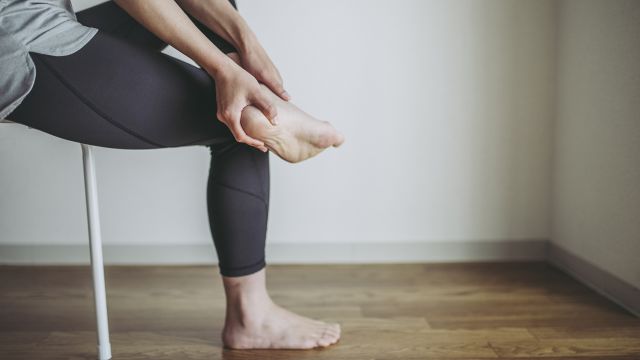Ankylosing spondylitis (AS) is a form of inflammatory arthritis. Like other forms of inflammatory arthritis, AS causes painful inflammation of the joints and is the result of abnormal immune system activity. The disease is characterized by flare-ups where symptoms are severe, followed by periods of remission where symptoms are mild or absent.
AS primarily affects the joints of the spinal column, including the joints between the vertebrae and the joints that connect the pelvis to the spine. Pain in the lower back and hips (especially at night) and stiffness after waking from sleep (or after a long period of rest) are common early symptoms.
Initial symptoms usually begin in people under the age of 45, though people of all ages can develop AS. The condition seems to be more commonly diagnosed and more severe in men.
Here, we look at some answers to common questions about AS.
The cause of ankylosing spondylitis is unknown
The exact cause of AS is unknown—healthcare researchers have not identified why some people have AS and others do not. Research has found that a gene called HLA-B27 increases a person’s risk of having AS, though not all people with this gene develop the condition.
AS can cause permanent damage to the spine
Over time, AS can cause the affected vertebrae to fuse together, as the soft tissues between the spinal bones wear away and are replaced with scar tissue and newly formed bone. This can fuse the spine in a fixed, immobile way that sometimes causes forward-stooped posture. In severe and advanced cases, some people with AS are unable to raise or move their head and neck. AS can also cause bones to become thinned and weakened, increasing the risk of fractures and injury to the spine.
AS can affect other joints throughout the body
While AS primarily affects the joints of the spine and pelvis, people with AS may also experience symptoms in other joints throughout the body, including the hips, shoulders, wrists, ankles, feet, and ribs.
AS is associated with other inflammatory disorders
AS is also associated with several other inflammatory conditions that affect other areas of the body, including uveitis (inflammation in the eye), cardiovascular disease, psoriasis, and inflammatory bowel disease.
Fatigue is common
Fatigue is common among people who have inflammatory disorders, including people who have AS. Unlike normal tiredness, fatigue does not improve with rest. Factors that can contribute to fatigue include inflammation, difficulty sleeping (often as a result of pain), anemia (low levels of hemoglobin), or a combination of different factors. Fatigue and energy levels are something that should be discussed with a healthcare provider.
Having AS puts you at an increased risk of depression
Inflammation and pain are both risk factors for depression. Your moods and emotions are another topic that should be discussed with a healthcare provider. And mental health should be a focus of treatment.
AS can be treated
There is no cure for AS, but the condition can be treated and managed. Treatment focuses on reducing inflammation, improving symptoms like pain, and reducing the risk of complications. Because symptoms and severity vary from person to person, treatment is individualized. Treatment often involves a combination of physical therapy and medications to reduce inflammation or reduce disease activity. Some people with AS require surgery to improve function and repair damage to the spine. Exercise, nutrition, and avoiding unhealthy habits (such as alcohol and tobacco use) are also important to managing the condition.






